Alaska cruise from Vancouver to Juneau brings glaciers, whales into view
The only way to experience this storied route along North America’s west coast is by plane or ship. I recommend the latter.
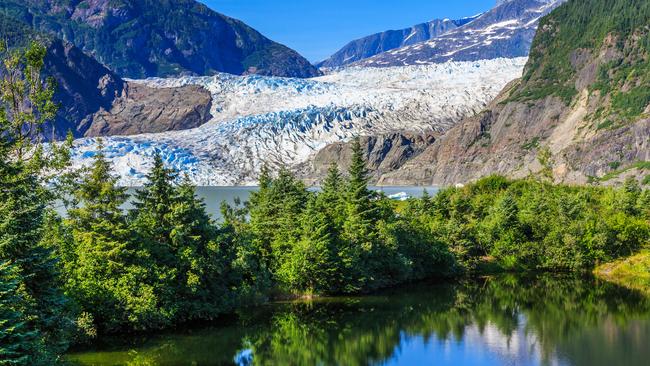
On a summer morning in Glacier Bay National Park, low cloud stretches across the mountains like elastic bands. An Arctic wind howls, but sea otters lounge back in the water like beachgoers, and mountain goats tap dance across the bare rock of Gloomy Knob.
Motoring through it all and emerging from the mist like a benevolent pirate ship, a park ranger’s boat cuts across the water and approaches our cruise liner. It’s nature and the national park delivering their standard Alaskan welcome.
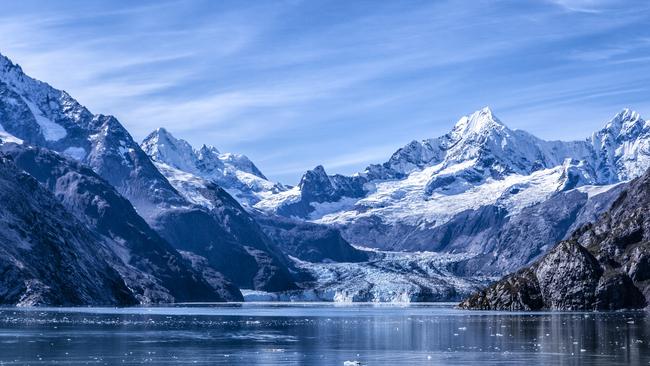
There are only two ways into this most famous and roadless of Alaskan national parks – by air and by ship – and only the latter can get you to the enormous tidewater glaciers that are the bay’s scenic stock-in-trade.
Each day over summer, only two cruise ships are allowed into the US’s fifth-largest national park, making any time here a privilege. Today is my day, as I stand at the ship’s bow in the ice-sharpened wind, watching icebergs and otters pass each other.
I’m aboard Koningsdam, one of the largest ships operated by Holland America Line. Celebrating its 150th anniversary this year, Holland America is also one of the companies that pioneered Inside Passage cruising when it first sailed through this belt of islands and protected waters in 1975.
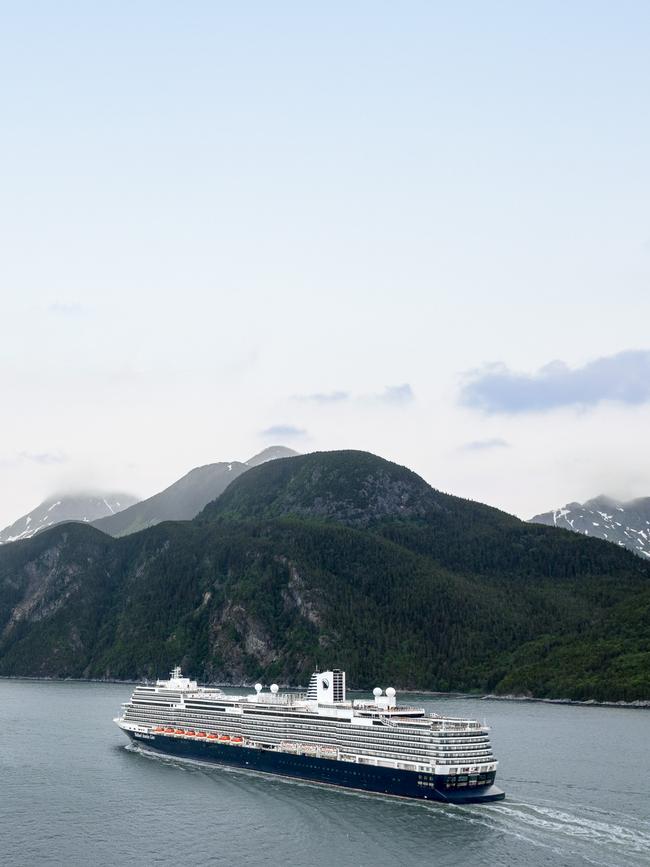
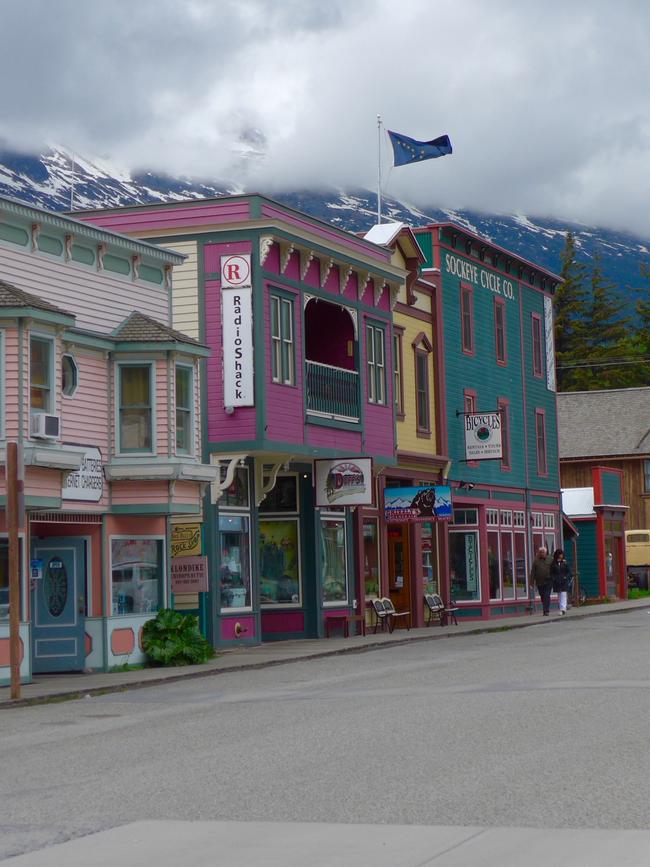
Stretching for 1600km along North America’s west coast, the Inside Passage is a place of striking contrast, bordered by the world’s largest temperate rainforest but capped by this bay of glaciers. The beauty is in its pincer grip – the Canadian and Alaskan mainland on one side, and a string of islands forming a buffer against the Pacific Ocean on the other, creating a famously smooth sailing route.
From embarking in Vancouver, it’s almost 48 hours at sea, wriggling between islands, to reach Juneau, Alaska’s curious capital. The largest US city by area, but with a population of 31,000, Juneau is the only US state capital with no road access. Like Glacier Bay, the only way here is by air or ship, and it’s a city filled with novelties, including a hotel possessing Wyatt Earp’s pistol, and a Russian Orthodox Church built by the native Tlingit people before a single Russian even lived here.
Isolated from the rest of the continent by the Juneau Icefield, the city’s true assets are natural, with the Mendenhall Glacier flowing almost to the sea north of Juneau, and the human population seemingly almost matched by the seasonal humpback whales. These two literal giants – glacier and whales – are the primary focus of Juneau shore excursions, and I’ve combined the two into a single day trip.
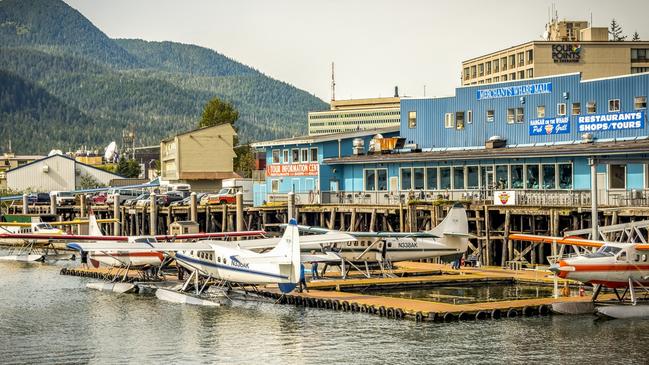
It’s just a 20-minute drive from Juneau to the glacier, which is itself a snapshot of the Inside Passage’s natural diversity, with the Tongass National Forest – the US’s largest national forest, covering an area larger than Sri Lanka – growing right to its icy edges.
Walking trails wind through moss-draped spruce forest on land that was buried beneath the glacier less than a century ago. Inside the forest, markers chart the ice’s rapid retreat until, from a series of lookouts near the visitor centre, I’m peering over Mendenhall Lake to the glacier, almost 3km away.
It feels like looking at a dying wonder, with predictions that the glacier won’t be visible from the visitor centre by 2050, a prospect already troubling Juneau authorities as they face the loss of their principal tourism asset.
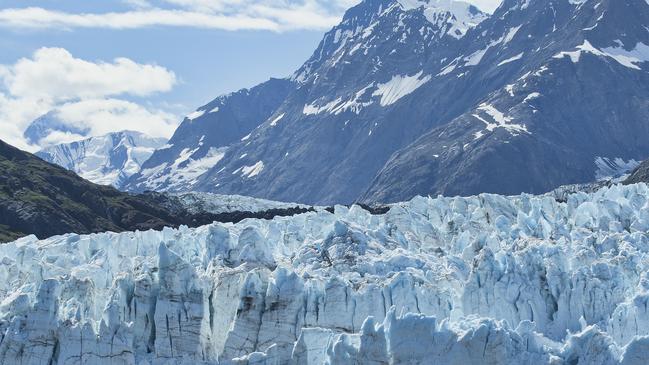
If the glacier does have a rival for attention, it’s humpback whales. Each summer, hundreds of whales migrate to these waters from Hawaii and Mexico. Their contribution to local life and tourism is celebrated in Juneau’s most striking public sculpture, a life-size, six-tonne humpback breaching from a fountain, but to see the real thing you need only head back out on to the water. Local whale-watch tour operators are so confident about sightings they promise part refunds if whales aren’t spotted.
In the early evening, I board a small boat in Auke Bay, just a few minutes drive from Mendenhall. The sea is churned and chopped by wind, and quickly the skipper turns the boat to tuck in behind the well-named Shelter Island. In the lee of this natural barrier, the main disturbance to the water is whales, their blows rising like geysers and their flukes offering the most beautiful of farewell waves each time they dive. In just a couple of hours I see almost a dozen whales, including a playful calf. It’s almost 9pm by the time we return to Koningsdam, the long northern evening still bright, the whales still readily visible.
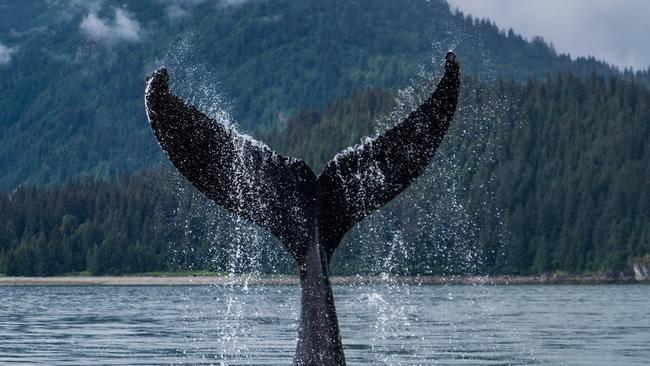
Through the night, the ship sails on towards Skagway, the gold-rush town at the Inside Passage’s northernmost point. Looking like a set from a John Wayne western, it’s a time-warp town with a saloon that runs brothel tours and craft brewers who use the local foliage to produce spruce-tip beer.
Skagway sits at the head of Lynn Canal, North America’s longest and deepest fjord, but no sooner am I ashore than I’m shuttling back through the fjord to Haines and a remarkable reserve behind that town’s back. Each autumn, up to 4000 bald eagles descend on the Chilkat Bald Eagle Preserve, making it the world’s largest gathering of America’s national bird.
In summer, when most cruise ships are here, the phenomenon is just beginning in dribs and drabs. As I head down the Chilkat River in a raft, bumping through tiny rapids, the trees that might each hold dozens of eagles in November are empty. Overhead, though, eagles intermittently soar across the sky like slow-moving comets in a prelude of the autumn show to come.
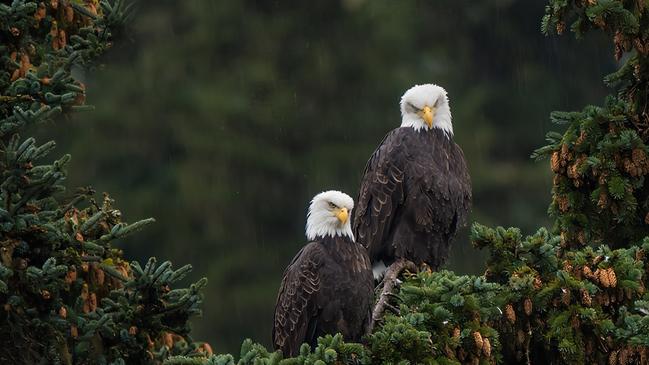
Lynn Canal is just one bay over from Glacier Bay, which we enter the next morning. Even 250 years ago it was impossible to get a ship into this stretch, with glaciers forming a Game of Thrones-style wall of ice across its entrance. Today, it’s a 100km journey through the ice-carved fjord to the nine tidewater glaciers that reach down to the sea.
We drift up first to Lamplugh Glacier. It’s a great blue wall of ice, the inlet around it so still it might itself be frozen except for the icebergs and sea otters floating about on its surface. Inside the ship, shielded from the icy wind, park rangers provide ongoing interpretation from what has become the only floating visitor centre in the US’s national parks system. Our second stop is at Glacier Bay’s most famous glacier, Margerie. Bent and buckled from its meandering journey through the mountains, it’s ice on steroids, with a terminus more than 1500m wide and 70m high.
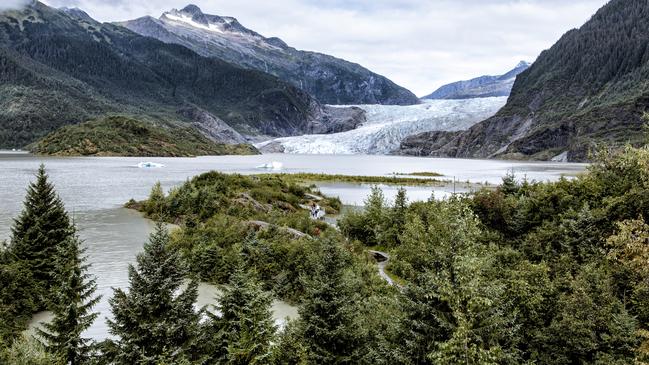
A tidewater glacier’s showstopping moment is when seracs calve from its terminus, crashing into the sea like a dynamited building. For this reason, Koningsdam idles offshore for an hour, waiting and hoping for this beautiful moment of natural violence.
In the end, the glacier is resolutely intact – stillness reigns – but even in the rain, this spot at the head of the bay has a singular beauty: the fractured ice, the flocks of seabirds flying in noisy patterns overhead, the snow-streaked mountains peeping through holes torn into the clouds by the wind.
Any moment now, Koningsdam will turn and begin its long journey back towards Vancouver and a final Alaskan stop at Ketchikan, but still we all stand in the downpour, awed by nature. It hasn’t been the hour of power we all wanted, but in a setting this grand, it doesn’t matter.
Andrew Bain was a guest of Holland America Line.
IN THE KNOW
Holland America Line operates seven-day Inside Passage cruises, return from Vancouver, from April to October. From $1609 a person, twin-share, for a verandah stateroom.

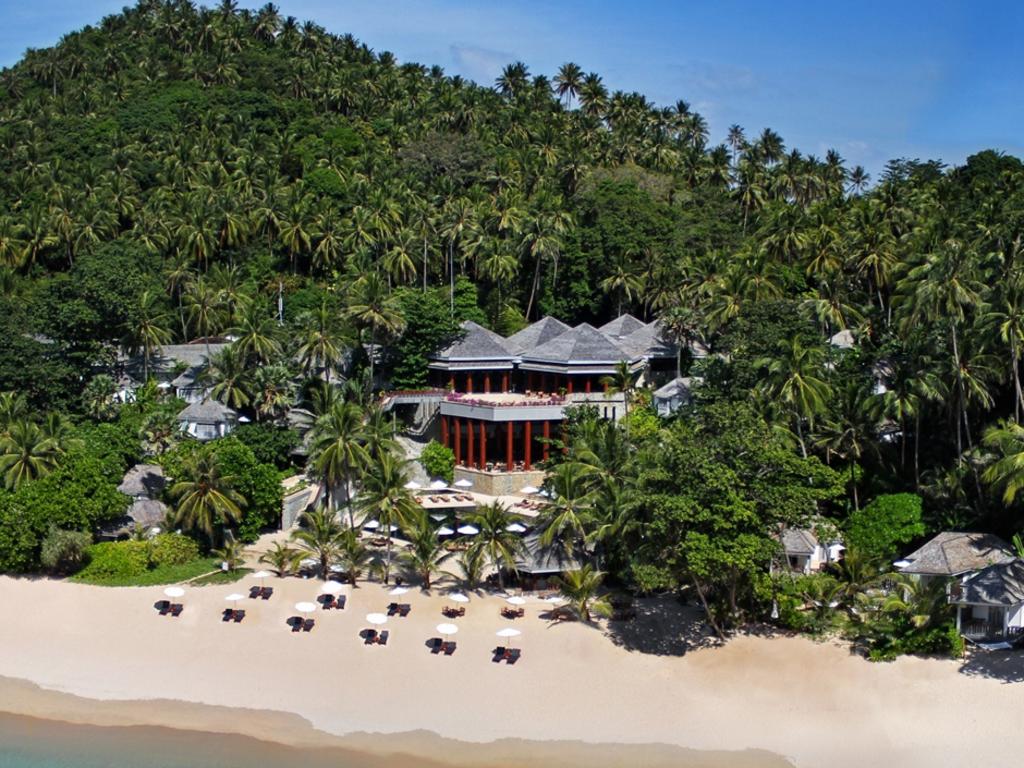


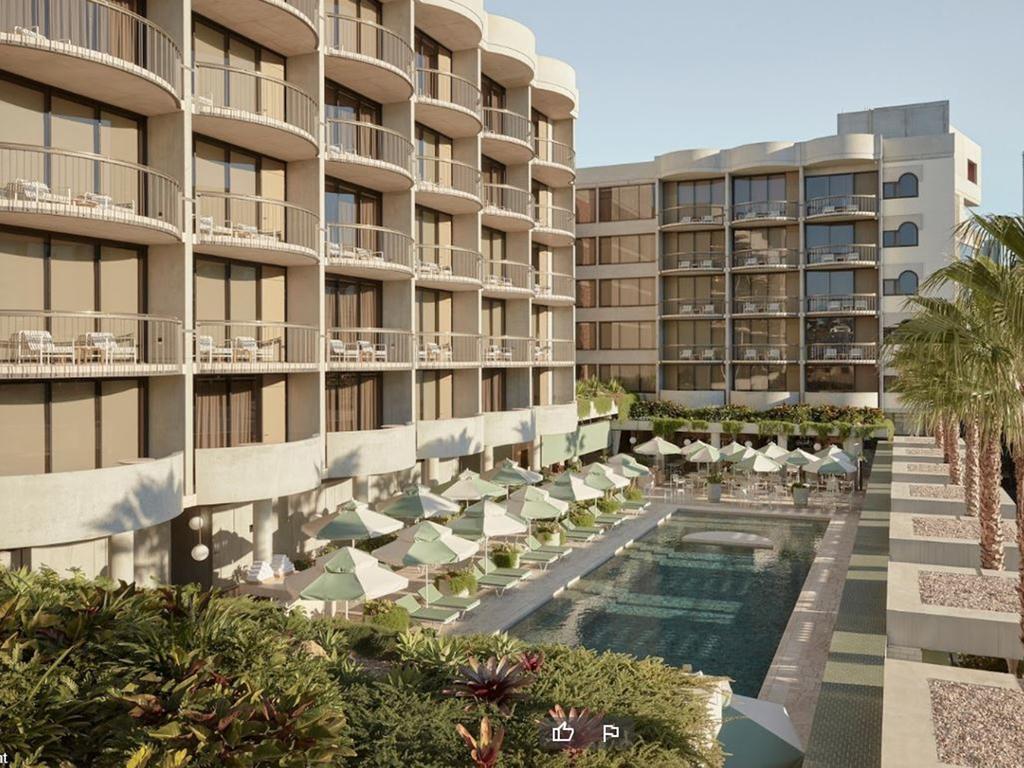
To join the conversation, please log in. Don't have an account? Register
Join the conversation, you are commenting as Logout